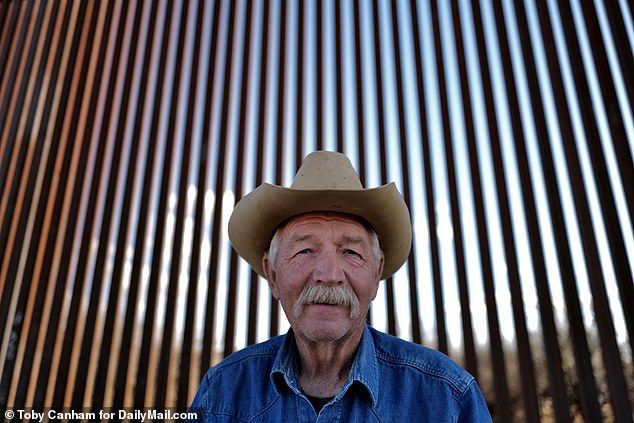As far as the eye can see, there is nothing but a brown border fence, red dirt, low desert bushes and the occasional sweatshirt, water bottle or child’s toy. The trash is new and fresh footprints can be seen in the dust: people have just passed by.
This stretch of the Arizona border near a small town called Sasabe is part of the Border Patrol’s Tucson Sector operations map, and it’s one of the busiest areas in the country for crossers who don’t want to get caught.
Arizona rancher John Ladd told DailyMail.com that the situation at the border is not just bad, “it’s the worst it’s ever been.”
His family has operated a cattle operation on the border since settling on the property in the 1890s. Ladd says he must periodically repair cut fence wire and recapture cattle that escape due to illegal immigration activity when they cross his property.
He estimates that his 16,000-acre ranch, which abuts more than 10 miles of border wall, has been the preferred route for at least 500,000 migrants over the past three decades, according to his own accounts and discussions with Customs and Border Protection.
Rancher John Ladd, 68, whose family has a 127-year legacy of ranching on 16,000 acres along the Mexican border, talks about the problems facing his livelihood and, to a larger extent, the country in regards to the cartel-run human trafficking operation.
And an election-year executive order by the Biden-Harris administration to secure the border through “safe and orderly pathways” has not significantly reduced the flow of migrants, Ladd told DailyMail.com.
“As soon as Biden was elected, the door opened. It was a deliberate decision to let them in,” said the lifelong desert dweller.
Still, recent figures from Customs and Border Protection (CBP) show encounters have declined along the border since the White House imposed new immigration restrictions in June, limiting the number of asylum seekers allowed into the country.
In July, there were just over 58,000 encounters, CBP data shows.
That huge figure, though lower than in previous months, is evidence of the growing business of Mexican cartels, Ladd told DailyMail.com.
‘The cartel makes around three and a half million a day from the fees that illegals pay to enter the country, and you can’t enter the country without the cartel’s blessing.’
And criminal smugglers have turned the crossing of people into the United States into a well-managed and efficient enterprise, the rancher said.
“They adapted. They were completely camouflaged,” he said. “We don’t have asylum seekers. We have people who run and shoot.”
“They wear carpet shoes and baklavas, and they are guided by a mobile phone given to them by the scouts.”
Some of those camouflage-clad smugglers, also known as “coyotes,” were spotted by DailyMail.com on a rural stretch of the US-Mexico border wall, where it ends just short of a Native American reservation.
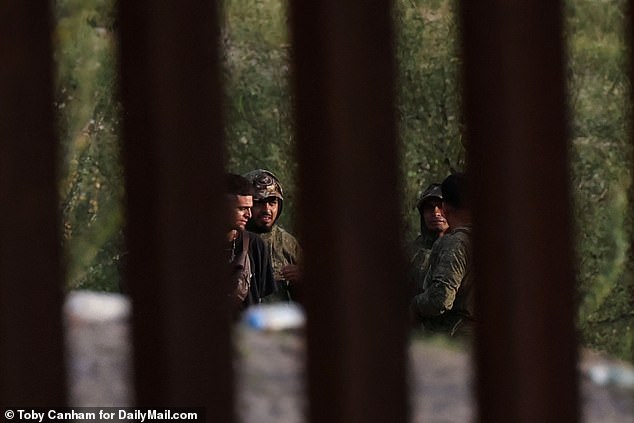
Apparent cartel human traffickers, called “coyotes,” stand guard on the Mexican side of the U.S.-Mexico border waiting for an opportunity to drop migrants off in the United States at an area where the massive border wall ends in rural Pima County, Arizona.
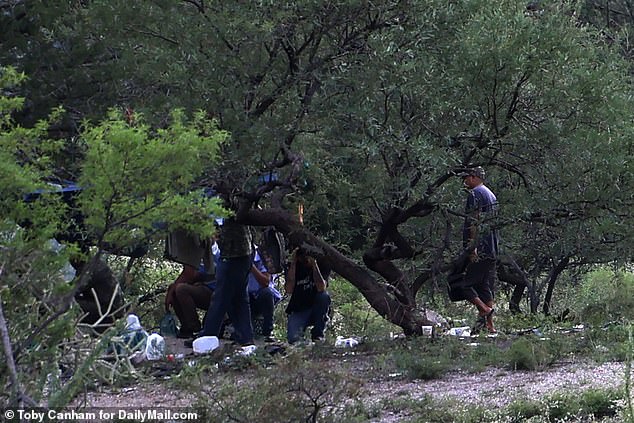
A group of migrants and smugglers settled a few meters from a hole in the border wall
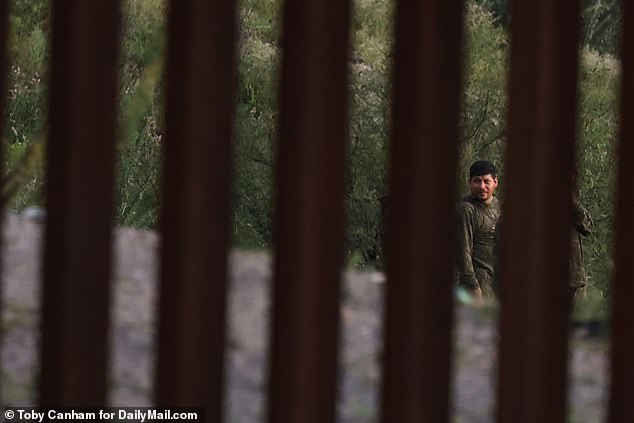
Some of the cartel’s camouflage-clad smugglers, known as “coyotes,” were spotted along a rural stretch of the U.S.-Mexico border wall, where it ends just short of a Native American reservation.
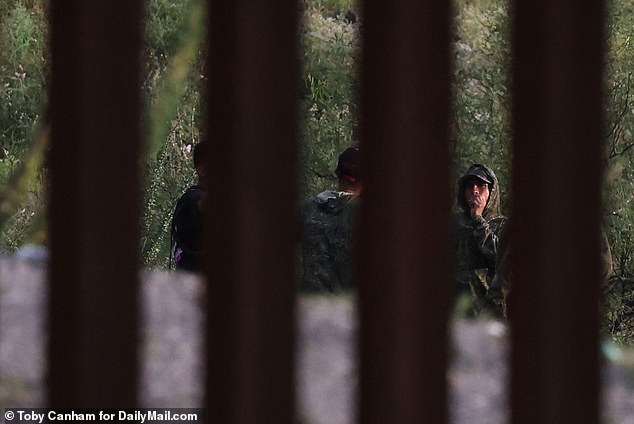
They were joined by a group of migrants who appeared to have installed a cross right in the gaping hole in the wall.
They were joined by a group of migrants who appeared to have installed the cross right in the gaping hole in the wall where it ends, just before a Native American reservation.
Aid workers were seen filling pre-pitched tents with snacks and water.
They also checked out a Starlink Wi-Fi box, installed at the edge of the border (and of civilization, by the way) to provide internet connection to recent immigrants.
A worker was seen approaching a child on the other side of the border, where the hole was before the reservation. A coyote was nearby and watching the interaction.
The workers were from the Tucson Samaritans and Doctors Without Borders and were there to provide humanitarian aid.
Both groups declined to comment for this report.
Meanwhile, the cartels have been busy and at war with each other over the strip of land surrounding Sasabe, including its lucrative crossing routes, Ladd said.
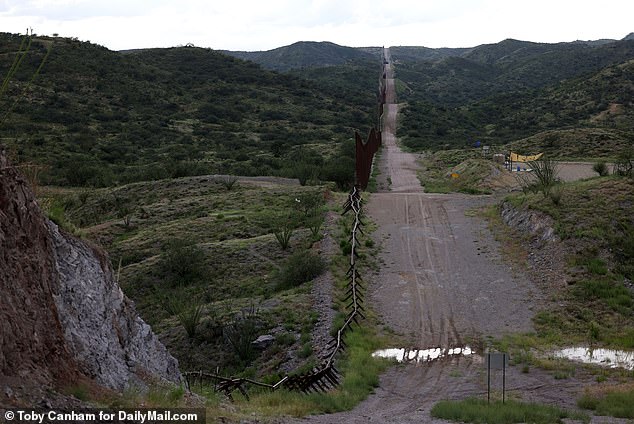
The huge hole in the border wall before the reservation can be seen in front of the pre-established shelters.
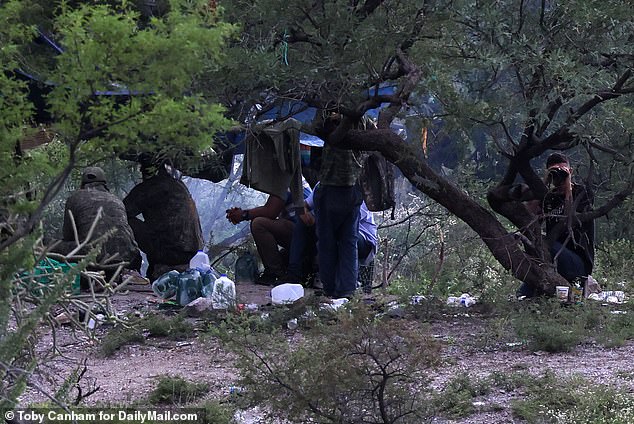
As DailyMail.com looked at the migrant camps, some of them looked on with suspicion
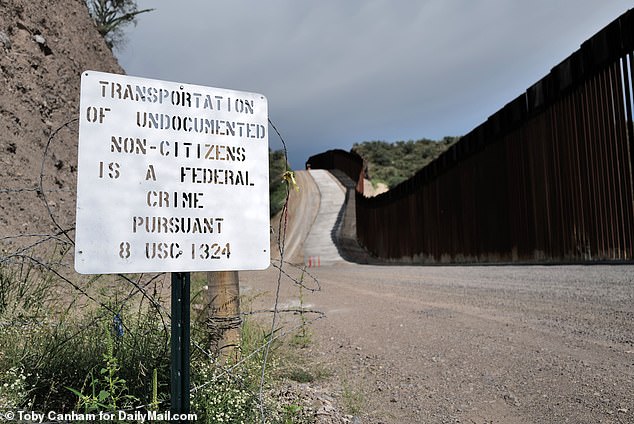
The trek along the border from Sasabe, Arizona, to the end of the border wall near the reservation was dozens of miles long, a dangerous journey for any migrant who had recently crossed.
He explained that a conflict has been going on there for three months, which has caused many deaths and burned buildings.
And a man with more than 20 years of experience in the Tucson Sector says illegal crossings in the area are on the rise.
The Tucson sector is currently the busiest for encounters and escapes, migrants whose footprints or traces were found but never apprehended, Art Del Cuerto, a member of the National Border Patrol Council’s Executive Board, told DailyMail.com.
He said there have been estimates of more than 2 million escapes since Biden took office.
And the patrol workforce there is overstretched as many agents have been assigned processing duties where they verify immigrants’ asylum claims.
As for the June executive order, it hasn’t done much for the reality of the locals, he said.
“That’s a political stunt, and it’s slowed down just because, you know, we’re in our summer rainy season, and it’s been hot, and we have flooding and thunderstorms, so it’s slowed down a little bit.”
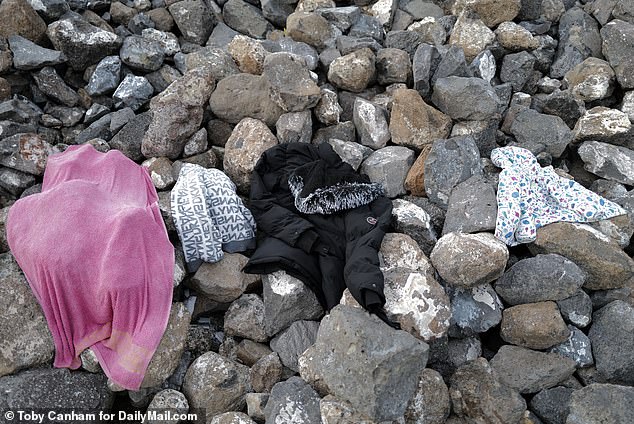
Clothes, including children’s, discarded by migrants on the US side of the wall
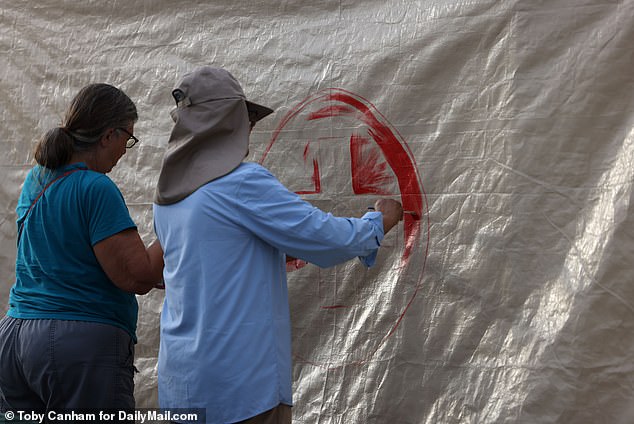
Aid workers paint a tent with a red cross on the hole in the border wall east of Sasabe
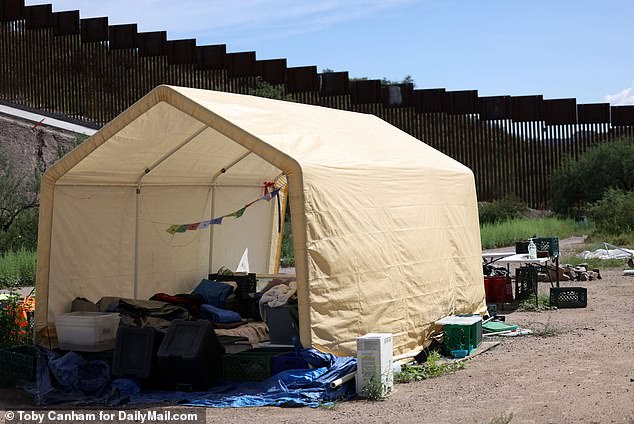
An abandoned aid tent lies dormant just yards from the U.S.-Mexico border
Ladd, however, is not against immigration reform and noted that he has sponsored three men for citizenship himself.
“We need people to come to the United States to do the work that Americans no longer want to do, but to do it legally,” Ladd said.
“It doesn’t matter if you’re from Mexico or Russia, you go through an investigation process. You come to the United States and that’s fine, but don’t sneak in through the back door and don’t depend on politicians to give you amnesty.”


